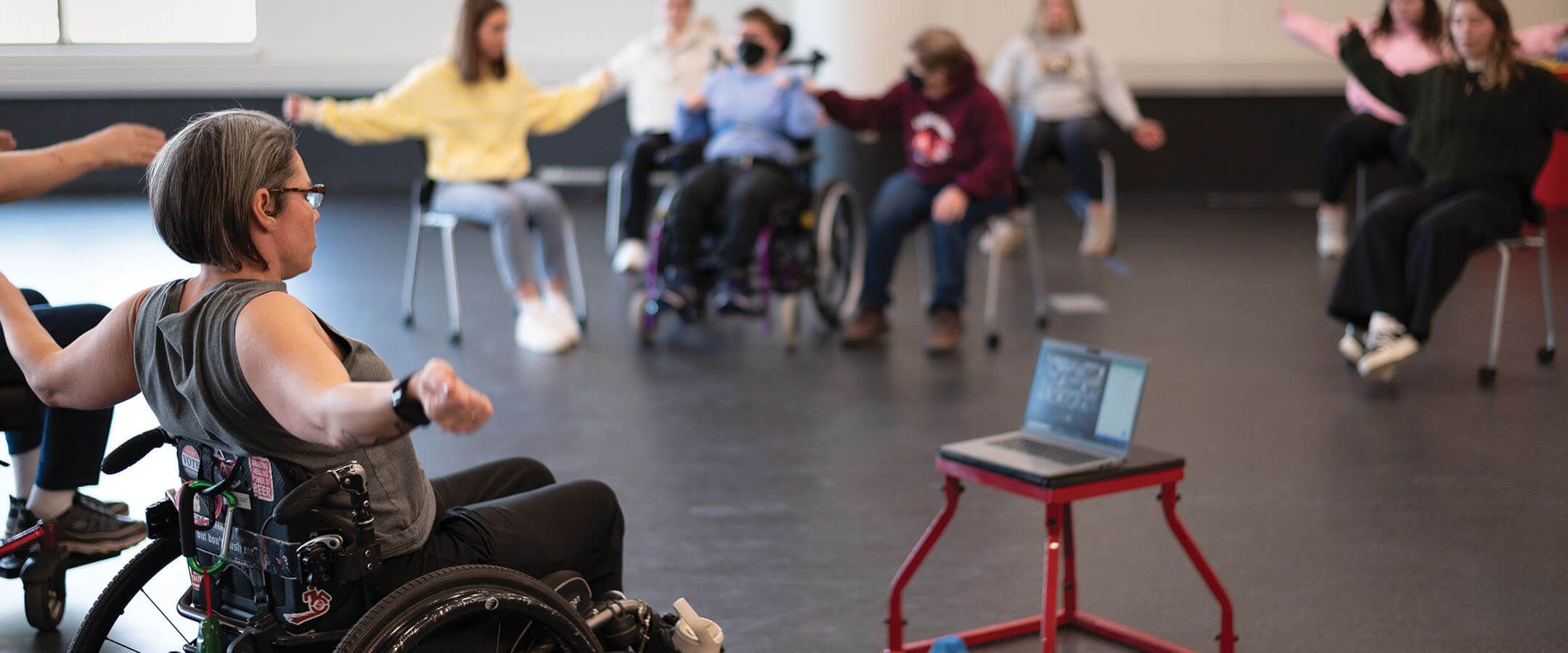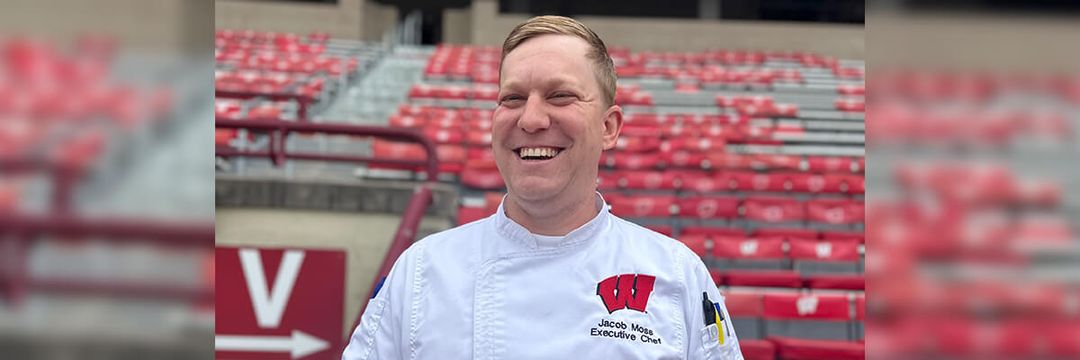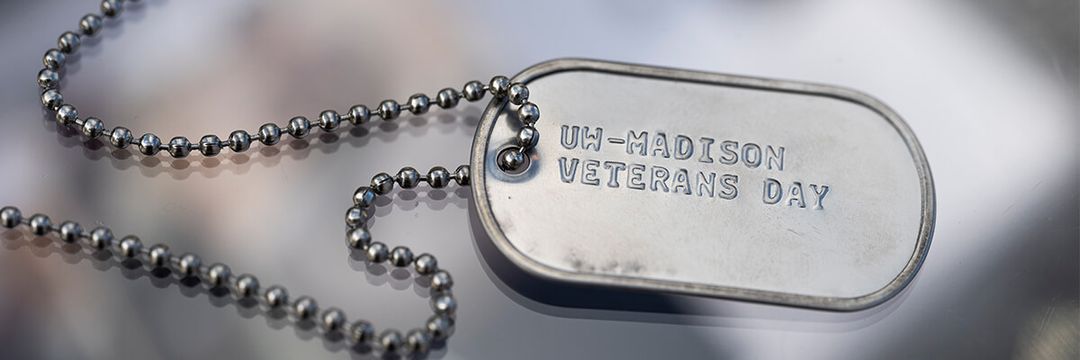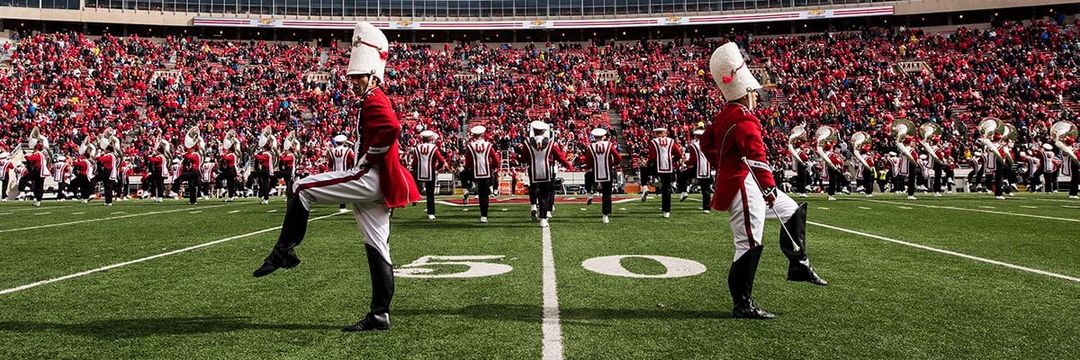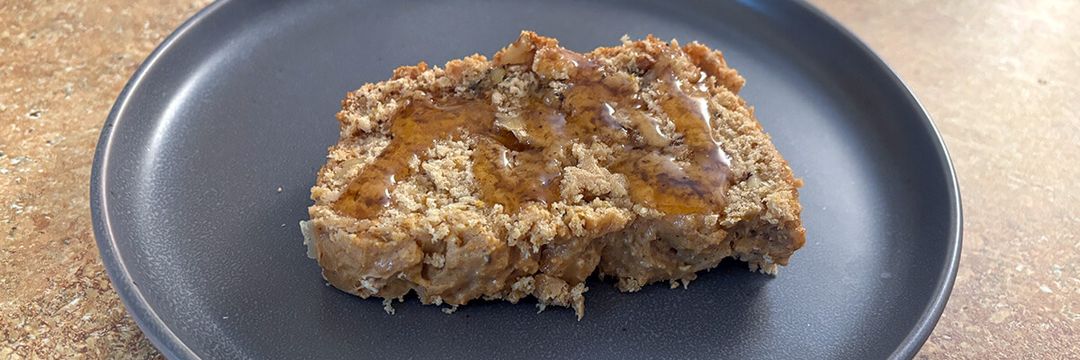When Autumn Neugent was diagnosed with multiple sclerosis in 2009, the lifelong athlete and longtime coach thought her physical activity would come to a screeching halt. Today Neugent, who now uses a wheelchair, has defied everyone’s expectations, including her own.
“I have done things that I would’ve never done before my diagnosis,” she says. The former hockey, volleyball, and softball star’s repertoire now includes kayaking, downhill skiing, waterskiing, earning a black belt in martial arts, and completing an Iron Man triathlon. “I’m embracing my abilities,” she says, “and I learned that through adapted fitness.”
Neugent started training with the UW’s adapted fitness program in 2012 under the tutelage of founder and then-director Tim Gattenby. She’s been a committed client ever since: the former coach in her is especially drawn to the opportunity to work toward her fitness goals while supporting UW students as they pursue their own goals of careers
in health care.
“I realized I am able to help these students become the occupational therapists or physical therapists that I need,” Neugent says. “The ones who are empathetic. The ones who understand that I’m a person and I do all of the things that everybody else does.”
A diagnosis couldn’t keep Neugent from physical fitness, and neither could a pandemic. In 2020, when adapted fitness students and clients couldn’t meet in person, Neugent began leading virtual workouts from home. Five years later, with the support of adapted fitness program director Kecia Doyle MS’13, PhD’21, Neugent and fellow client Jim Hammen are bringing their workouts to the new Conway Adapted Fitness facility in the Bakke Recreation and Wellbeing Center.
“This is huge for all of us,” Neugent says. “It’s huge for the adapted fitness program in the sense that clients are seeing that this program is for us, by us.”
The Conway Adapted Fitness facility was made possible by Mike ’78 and Ginny ’78 Conway, who were first introduced to the program by Gattenby. Instead of a traditional physical therapy setting in which
one trainer is spread across several clients, the Conways saw each adapted fitness client receive focused training tailored to their unique abilities.
“It just seemed like a great way for future [physiotherapists] to learn that that’s the way it should be,” Ginny says. “It brings a lot of humanity to the situation.”
That’s all that’s required to participate in Neugent’s classes: humanity and a willingness to
give it the old college try.
“People tend to focus on the lacks — the can’ts, the won’ts, the shouldn’ts, and the don’ts — instead of what they’re able to do,” she says. She should know. She was there once, too.
“I thought it was over. I did not know how I was going to come back,” she says. “Because of programs like adapted fitness, I have become a better version of myself.”
By adding fitness instructor to her résumé, she’s hoping to help others better themselves, too. Here, she shares her pep talk for people of all abilities seeking more movement in their lives.
Do what you can, how you can.
There’s no right or wrong way, as long as you are moving. I have people in my Zoom workouts that aren’t able to lift their arm up to do a stretch, but maybe they get a little closer every time. I know I have someone right now who can put her arm up over her head, and she could not before. She’s only been doing it for two months.
Get creative with your gear.
You do not need a state-of-the-art facility or equipment. I often tell people, when we’re doing an arm day, you can use a weight, you can use a bottle of water, you can use a can of soup, you can use your cat, or you can just do the movements and use gravity. That can be hard enough.
Set attainable goals.
That is something that I learned in adapted fitness. I would have these huge, grandiose goals: “I want to walk. I want to run.” Okay, in order to run, you have to be able to stand up without falling. You need to strengthen your ankles first. Now you need to strengthen your knees. There are steps to it.
Turn your envy into ambition.
I encourage people not to compare themselves in an “I can’t do that” type of way. Instead, you can aspire to do something that someone is doing. You can steal ideas from them, try it, and you may find out, “Oh my gosh, I can do it this other way.”
Do it for you.
This workout is for you. It’s not to impress me. It’s not to impress anybody. If you’re doing it for someone else, it’s never going to work. It’s got to be for yourself.
Be kind to yourself.
I’ve been doing this since [2020], the same movements over and over again. When I started, no one could physically see my movement on my left foot during leg extensions. Now, I’m able to get it up like 45 degrees. … Without being patient with myself and being kind to myself, I wouldn’t have gotten that.


